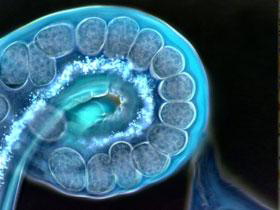When analyzed realistically, the Miller experiment—first performed to prove that life could have emerged by chance in the primitive atmosphere—can be seen to be riddled with various inconsistencies.
One factor that invalidates the Miller experiment is the mechanism known as the cold trap, a mechanism that isolates amino acids the moment they form. Otherwise, the conditions giving rise to amino acids would immediately destroy these same molecules. Yet it is absurd even to consider the possibility that any such protective arrangement came about under in primeval conditions that included ultraviolet rays, lightning, various chemicals and high levels of oxygen. In the absence of any mechanism like a cold trap, any amino acids that were obtained would be immediately broken down again.
“Cold trap”, being the crucial part of Miller’s tools, has the duty to collect the products as they were formed out of chemical reactions. Actually, without this cold trap, the chemical products would be destroyed by the energy source (electrical sparking).87
In Miller’s previous experiments, in fact, he had used the same materials, but had failed to obtain even a single amino acid without setting up a cold trap mechanism.
Miller’s aim was to obtain amino acids, and the methods and equipment he employed were specially arranged in order to achieve that objective. Above all, however, even if we postulate the existence of intelligence capable of ensuring such a method, order and arrangement in the primitive atmosphere, this conflicts with the theory of evolution’s own logic.


